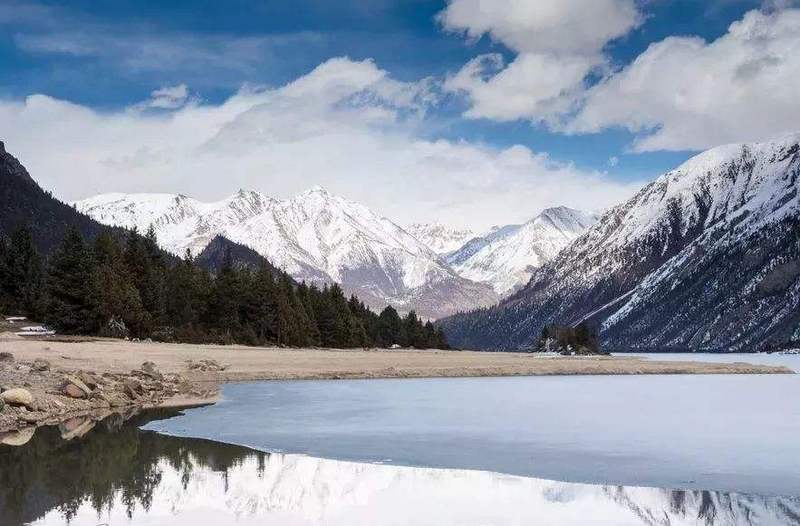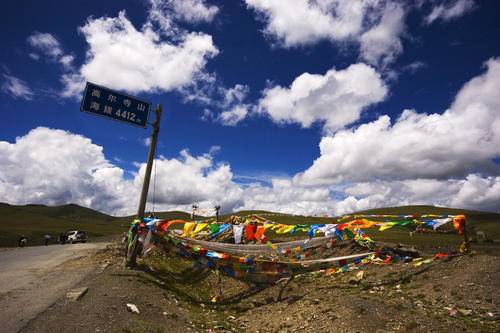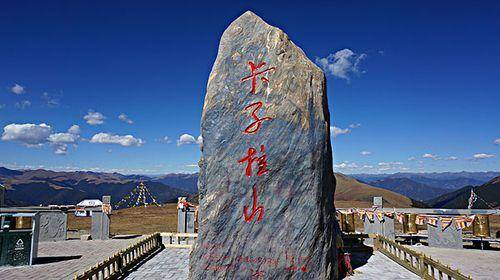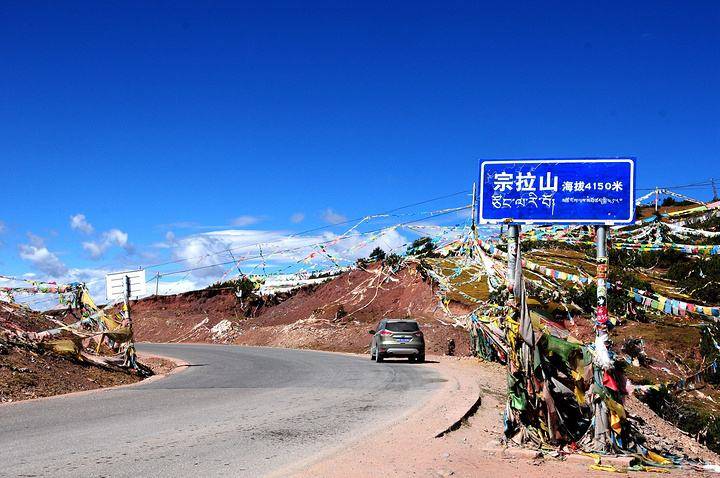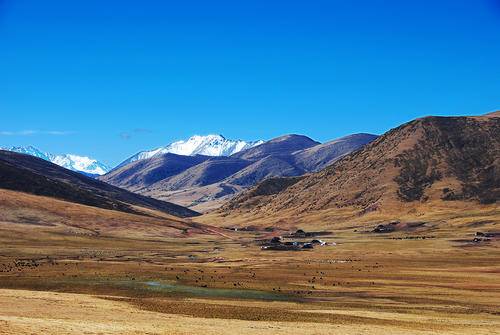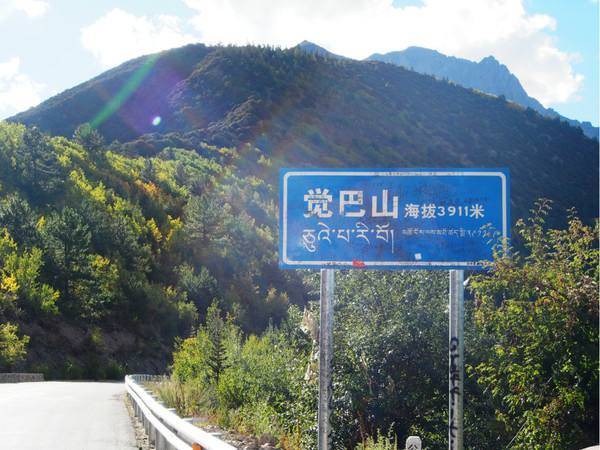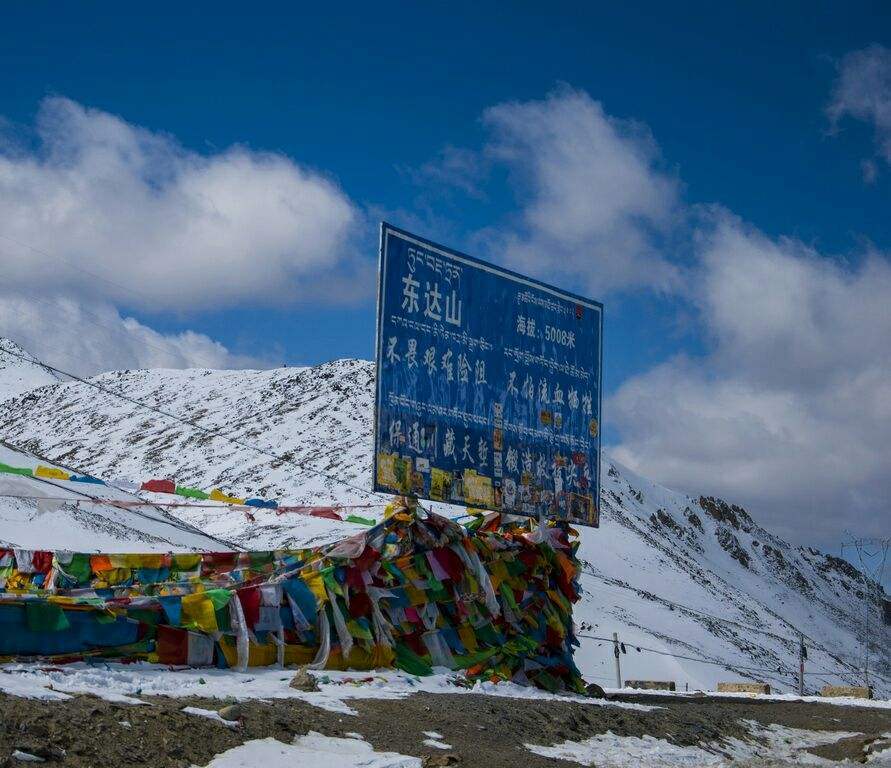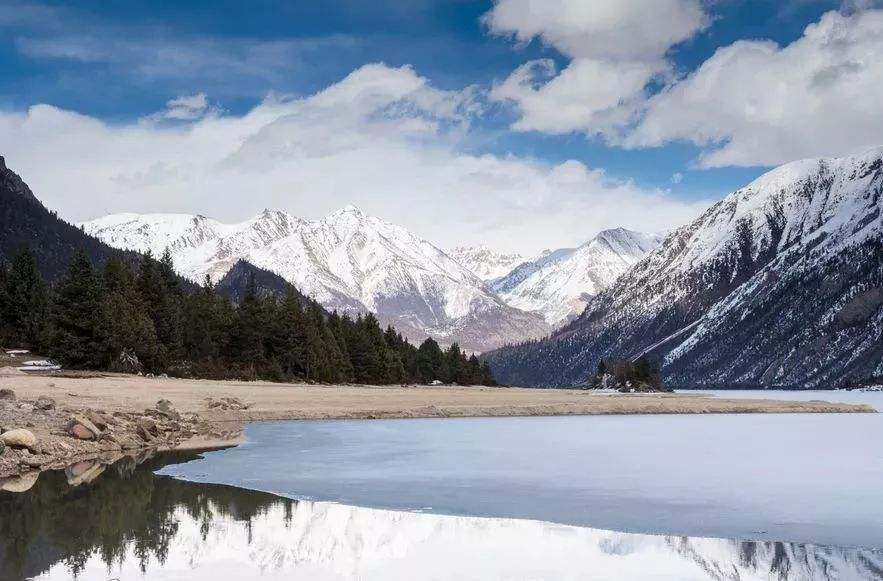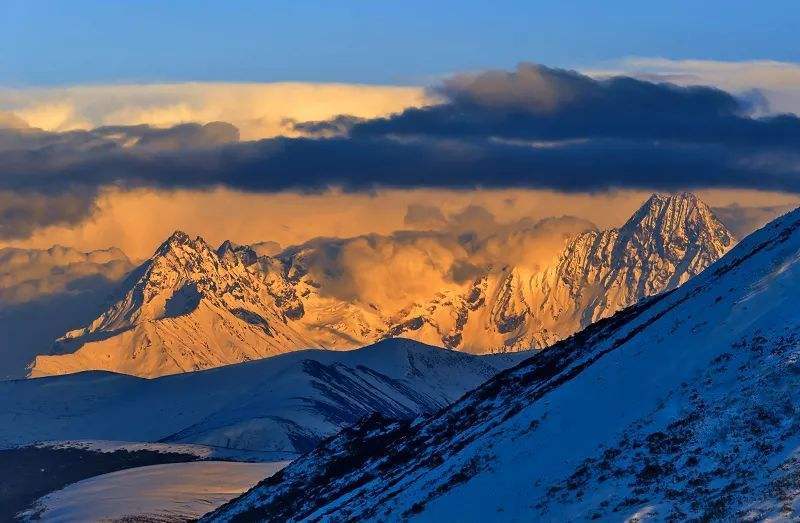Zheduo Mountain Pass
Zheduo Mountain is known as the first pass of Sichuan-Tibet, indicating that it is not just a simple mountain peak. The water vapor from the north, south, east, and west converges here, and the weather can change rapidly. Heavy rain, snow, and hail can suddenly pour down on you at any moment. This is also the geographical boundary between the traditional Tibetan area and the Han area. Beyond here lies the true Qinghai-Tibet Plateau.
Ga'ersi Mountain Pass
Ga'ersi Mountain is known as the 'Second Pass of Kham'. It is named after the Ga'ersi Temple on the mountain and is located between Xinduqiao and Yajiang. The road up the mountain is difficult to navigate. The altitude is high, with many bends and dangerous sections. In many places, when two cars pass each other, there is barely enough room, with half of the car's wheels on the edge of a cliff, making it extremely perilous. Fortunately, the tunnel is now open, so there is no need to cross the mountain anymore.
Jianziwan Mountain Pass
Jianziwan Mountain, known in Tibetan as 'Rema Nazha', means 'the resting place of the divine sheep'. Legend has it that when the Third Dalai Lama returned from a pilgrimage after overcoming numerous hardships, his divine sheep mount was exhausted and rested on this mountain. The true reason for the fame of Jianziwan Mountain Pass is the steep and winding mountain road, often covered with hidden ice, posing continuous safety hazards for drivers. Particularly notorious is the 102K section, known as the 'Ghost's Hand', with its rugged terrain and multiple consecutive sharp turns, making drivers' palms sweat as they pass.
Kazila Mountain Pass
Kazila Mountain and Jianziwan Mountain are two sister peaks belonging to the Shaluli Mountain Range, separated by only about 100 kilometers and facing each other. Someone once described these sister passes as follows: 'From here, we feel like immortals, wandering among the white clouds in the blue sky.' Their terrains complement each other; if Jianziwan Mountain is a grassland covered high mountain, then Kazila Mountain is more like a high mountain standing on the grassland.
Haizi Mountain Pass
After passing through the largest and most beautiful Maoya Grassland on the southern Sichuan-Tibet line, a wide, shallow, and gentle pass appears in front of you, which is the Haizi Mountain Pass. The sister lakes, composed of Dali Lake and Duolun Lake, are like two dazzling pearls embedded in the Gongger Grassland. Every late summer and early autumn, the golden rapeseed flowers bloom, reflecting the azure lake water. Cycling here feels like entering the back garden of heaven.
Zongla Mountain Pass
Zongla Mountain Pass is the first pass on the Sichuan-Tibet line entering the Tibet region. It marks our entry into Tibet and the beginning of the roller-coaster-like Three Parallel Rivers area. Zongla Mountain is the lowest high mountain among the 4000+ meters peaks on the entire southern Sichuan-Tibet line. Its characteristic is the red soil covering the mountain, which is embedded like colorful ribbons among the tall pine forests.
La Wu Mountain Pass
After passing through Mangkam County, we began to climb La Wu Mountain. With just a few hairpin turns, we found ourselves among the clouds again. Along the way, a platform with a severely damaged vehicle from a traffic accident constantly reminded us that although this mountain is not high, we should not underestimate it. There is no obvious sign at the La Wu Mountain Pass, making it inconspicuous. The most famous feature at the summit is actually the highland prairie mice that roam freely.
Jueba Mountain Pass
Jueba Mountain is not very high, with the pass elevation only at 3911 meters. However, due to the deep incision of the Lancang River over thousands of years, the riverbanks are steep and towering, presenting a scene of desolation and hardness, giving people a sense of high mountains and deep valleys. This is one of the famous dangerous sections in the Hengduan Mountains. The 30-kilometer winding mountain road and the nearly 2000-meter relative height difference make Jueba Mountain one of the most difficult and time-consuming mountains to climb on the Sichuan-Tibet line.
Dongda Mountain Pass
Dongda Mountain is located in Zuogong County, Tibet, and is the second highest pass on the Sichuan-Tibet line. In summer, the meadows are green, yaks are in herds, and the scenery is extremely beautiful. There is a slight discrepancy between the sign and the actual height of Dongda Mountain Pass; actual measurements show it to be over 5100 meters, which is close to the height of the Everest Base Camp (5200 meters).
Yela Mountain Pass
Yela Mountain, also known as Nujiang Mountain, is the greatest natural barrier of the Hengduan Mountains. Geological activities are frequent, and mudslides, large-scale landslides, and collapses are common occurrences. Under harsh natural conditions, National Highway 318 is intermittently interrupted, making Yela Mountain another treacherous route into Tibet, second only to the Tongmai natural barrier.
Anjula Mountain Pass
Anjula Mountain is the natural watershed between the Nujiang River and the Yarlung Zangbo River. Crossing Anjula Mountain takes you from the Nujiang River basin into the Yarlung Zangbo River basin. To be honest, the 4325-meter Anjula Mountain Pass is somewhat surprising. Unlike the steep and rugged passes of many famous mountains and rivers, the Anjula Mountain Pass is remarkably gentle. However, in contrast to the terrain, the climate conditions are extremely unfriendly, with rain, snow, strong winds, and cold making people feel tortured and miserable.
Sejila Mountain Pass
Sejila Mountain is located to the east of Nyingchi County in Tibet and belongs to the Nyenchen Tanglha Mountain Range. It serves as the watershed between the Niyang River and the Parlung Tsangpo River. From the Sejila Mountain Pass, one can also see Namjagbarwa Peak, the highest peak at the eastern end of the Himalayas, standing at 7,782 meters. However, due to the perennial fog and clouds, seeing its true appearance depends on luck.
Mila Mountain Pass
Mila Mountain Pass is a must-pass place from Lhasa to Nyingchi. Heavy clouds float beneath your feet, giving you a feeling of standing on the clouds. Next to the boundary monument at the pass, there are many people waiting to take photos. The once rarely visited Mila Mountain Pass is now bustling with tourists.
